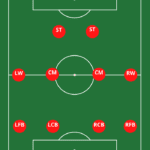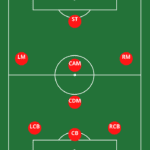- Last Updated -
The VAR Revolution: Shaping the Game
As the world of soccer continues to evolve, so too does its officiating. One significant change that has sparked both excitement and consternation among fans and pundits alike is the impact of VAR on modern Soccer.
VAR, a system that employs video replays to assist match officials in making crucial decisions, has undeniably left an indelible imprint on the modern game.

With its ability to review various incidents and provide a more accurate assessment of events on the pitch, VAR aims to minimize human error and ensure justice prevails. Video Assistant Referee, commonly referred to as VAR, is a technological innovation designed to assist referees in making pivotal decisions during soccer matches.
Put simply, it serves as an extra set of eyes capable of reviewing contentious incidents in real time using video footage. Whether it’s offside calls or potential red card offenses, VAR provides referees with a tool to verify their judgments, thereby minimizing incorrect decisions that can have far-reaching consequences.
However, like any revolution in sports or society at large, the introduction of VAR has not been without controversy. Traditionalists argue that this technological intervention disrupts the flow and spontaneity of the game.
They believe that relying too heavily on video replays causes unnecessary delays and disrupts the emotional rollercoaster experienced by players and fans alike. Moreover, critics argue that despite its intent to eradicate errors from refereeing decisions, VAR often perpetuates subjectivity rather than providing unequivocal clarity.
The interpretation of certain incidents remains open for debate even after multiple replays are scrutinized by officials. This room for subjective judgment leaves room for different opinions on whether a particular decision was fair or accurate.
A Delicate Balancing Act: Striking Fairness Amidst Controversy
Ever since its inception, VAR has sparked fierce debates and divided opinions throughout the world of soccer. While some hail it as the much-needed antidote to erroneous calls, others lament the loss of spontaneity and human fallibility that once characterized the game.
The controversy surrounding VAR’s introduction in soccer is a testament to its profound impact on the sport. Despite the ongoing debate, VAR has undoubtedly reshaped officiating and leveled the playing field by granting referees an additional tool for decision-making.
In subsequent sections, we will explore how this technology works, dissect its impact on match decisions and tactical strategies adopted by teams, evaluate fan reception and emotional implications, and discuss its usage during international competitions. Through detailed analysis, we aim to unravel both the promises and challenges brought forth by this revolutionary addition to modern soccer.
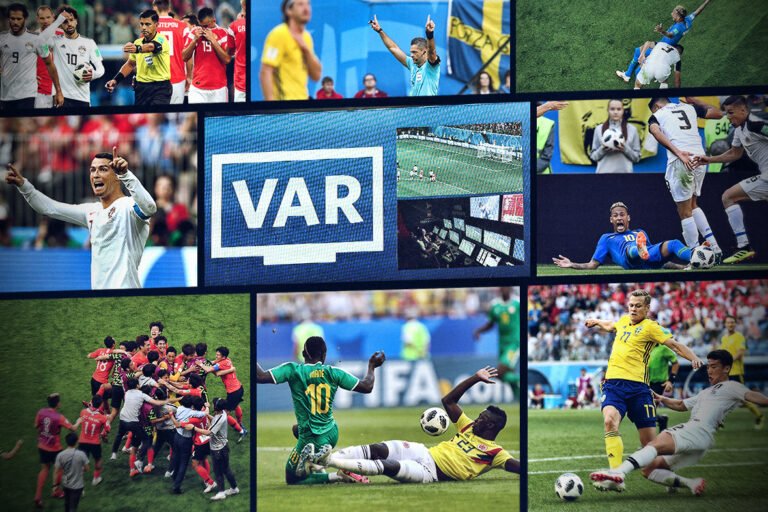
The Evolution of Soccer Refereeing
Traditional Refereeing Methods: Balancing Act on the Pitch
In the realm of soccer, referees have always been the authoritative figures entrusted with the task of maintaining order on the pitch. They rely on their eyesight, experience, and intuition to make crucial decisions in real time.
However, this traditional approach to refereeing is not without its challenges. With players moving at lightning speed and matches played in high-pressure situations, it’s no wonder that referees occasionally make errors or miss crucial incidents.
Their limited field of vision often leaves them susceptible to human fallibility. Referees are expected to keep track of a multitude of factors simultaneously – from offside positions to potential fouls or handballs.
The fast-paced nature of soccer sometimes results in split-second decisions that can have long-lasting consequences for teams and players alike. Moreover, acting as both judge and executioner adds immense pressure to their role as they must make snap judgments that impact the flow and outcome of a match.
The Introduction of Technology: When Human Meets Digital Assistance
Recognizing the need for more accurate decision-making and wanting to reduce contentious moments during matches, technology made its way onto soccer pitches. The introduction of video replays and digital assistance through VAR marked a significant turning point in modern refereeing practices. VAR aims to provide referees with an additional toolset by leveraging technology’s precision for important match-changing incidents.
It enables them to review selected incidents on video monitors located off-pitch, thus eliminating human error as much as possible. This technological advancement has forever altered how we perceive referee decisions during intense moments when everything hangs in balance.
With advancements like goal-line technology aiding referees in determining whether a ball crossed over fully into the goal or not, contentious debates about goals being given or disallowed due to human error are gradually becoming less common occurrences. These advancements have also paved the way for more objective decision-making, fostering a fairer and more transparent environment in the beautiful game.
However, this transition from traditional to technology-assisted refereeing has not been entirely seamless. The inclusion of VAR has sparked heated debates among fans, critics, and soccer pundits regarding its impact on the game’s overall dynamics and the referees’ role therein.
It’s a topic that continues to divide opinions and raises questions about whether technology should dictate every aspect of the sport or if there is still room for human judgment. While traditional refereeing methods relied heavily on subjective judgments and limited perspectives, modern soccer refereeing has embraced technology to mitigate errors and bring greater accuracy.
The influence of video replays and digital assistance through VAR represents a significant step in ensuring fair play on the pitch while challenging long-held conventions surrounding referee authority. Yet, as we delve deeper into understanding how VAR functions and its implications on match decisions, it becomes clear that its implementation is not without controversy.

How VAR Works
The VAR System: A Technological Aid for Referees
When it comes to the modern game of soccer, technology has undoubtedly left its mark. One significant addition that has stirred up both excitement and controversy is the Video Assistant Referee, more commonly known as VAR.
This innovative system aims to provide referees with crucial technological aid in making important decisions during matches. By combining video footage and real-time monitoring, VAR seeks to enhance accuracy and fairness in the beautiful game.
The Components of VAR: Referee Review Area and Pitchside Monitors
At the heart of the VAR system lies a dedicated area known as the referee review area. This secluded space serves as a sanctuary for referees to review incidents that require closer inspection.
It allows them to carefully analyze video replays from various angles before reaching their final decision. To facilitate this process, pitchside monitors are strategically positioned near the touchline.
These high-definition screens enable referees to view instant replays during live action without disrupting the flow of the game. Armed with these tools, referees can assess incidents thoroughly and make informed judgments based on concrete evidence.
The Process Followed: A Step-by-Step Guide
So how does it all work in practice? Let’s take a closer look at the step-by-step process followed by referees when utilizing VAR during a match.
- Incident Occurs: The first stage occurs when an incident takes place on the field that requires further examination by on-field officials or upon request from one of the match officials involved. 2. Communication with VAR Team: The referee then initiates communication with his team of video assistant referees located in a centralized Video Operations Room (VOR).
This connection allows for seamless collaboration between those analyzing footage remotely and those officiating on-site. 3. Reviewing Footage: While play continues, the VAR team diligently reviews potential incidents from different camera angles to ensure accuracy.
They have access to a wide variety of camera feeds, including those capturing live action, slow-motion replays, and even freeze frames when necessary. 4. Recommendation to Referee: After analyzing the footage thoroughly, the VAR team provides their recommendation or advice to the on-field referee via a discreet wireless communication system.
This recommendation can range from advising the on-field referee to review an incident themselves on the pitchside monitor to informing them of an obvious error that needs correction. 5. Final Decision: Ultimately, it is up to the on-field referee’s discretion whether to accept or reject the VAR team’s advice.
However, in cases where there is clear evidence supporting a change in a decision or an overlooked incident, referees are encouraged strongly to trust and follow the guidance provided by VAR. The implementation of VAR has revolutionized soccer by incorporating advanced technology into decision-making processes.
By utilizing referee review areas equipped with pitchside monitors and following meticulous step-by-step procedures for reviewing incidents on video footage, VAR ensures that referees have all available tools at their disposal when making crucial decisions during matches. Nevertheless, as we delve deeper into its impact, it becomes evident that controversies still arise despite this technological advancement.
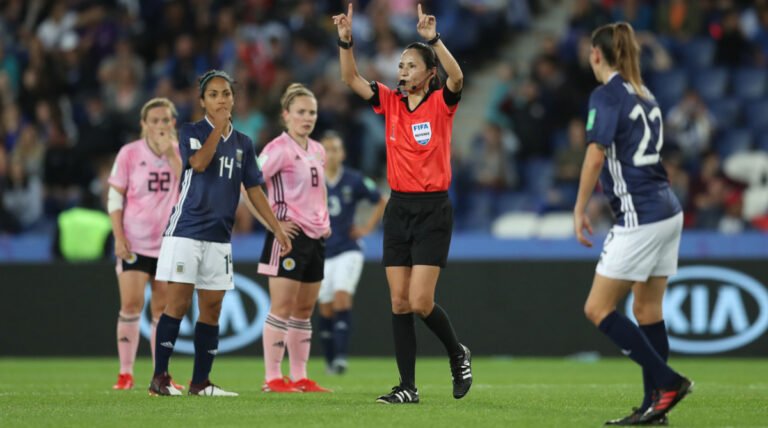
Impact on Match Decisions
Increased accuracy in offside decisions and goal-line technology implementation
When it comes to match decisions, VAR has undoubtedly revolutionized the game of soccer. One area where its impact has been remarkable is in offside decisions. Gone are the days of contentious, split-second calls made by assistant referees.
With VAR, referees now have access to multiple camera angles and slow-motion replays that enable them to make precise offside calls. The introduction of goal-line technology has also been a game-changer.
No longer do we have those heart-stopping moments when a ball hovers right on the line, leaving fans and players alike holding their breath. Thanks to VAR, referees can now rely on technology to determine whether the ball has crossed the goal line entirely or not.
Explanation of how VAR assists referees in making precise offside calls
Let’s dive deeper into how exactly VAR helps referees make accurate offside decisions. When a potential offside situation arises during a match, the referee can initiate a video review with the assistance of the VAR team.
Multiple camera feeds are analyzed meticulously by these experts from various angles. They use freeze frames and zoom capabilities to study every player’s position at the moment when the ball is played.
The process involves drawing lines across different body parts of both attacking players and defenders to determine if any part of an attacker’s body is ahead of the last defender during the moment of ball release by their teammate. This level of scrutiny minimizes error margins significantly and ensures that only clear-cut offsides are detected and penalized.
Benefits and drawbacks of goal-line technology usage with VAR
Goal-line technology, which determines whether or not a ball has fully crossed the goal line, pairs seamlessly with VAR to enhance match decisions further. The benefits are evident — no more controversial incidents where goals are disallowed or awarded incorrectly. This technology provides an objective and definitive answer, eliminating human error.
However, like any innovation, there are drawbacks to consider. Some argue that the introduction of goal-line technology takes away the human element of the game.
They believe that debates and discussions about close calls add excitement and drama to soccer matches. Furthermore, there are concerns regarding the cost of implementing these technologies in smaller leagues or lower-tier competitions, making it less accessible for all levels of play.
VAR has significantly impacted match decisions in modern soccer. The increased accuracy in offside decisions through precise technology-assisted calls has eliminated potential controversies and provided a level playing field for all teams involved.
Additionally, the implementation of goal-line technology ensures that goals are correctly awarded or disallowed without room for dispute. It is important to weigh the benefits against the potential drawbacks as soccer continues to evolve with technological advancements aimed at enhancing fairness and reducing errors on the pitch.

Controversies Surrounding VAR
The Delicate Balance of Subjectivity and Video Evidence
The introduction of VAR in soccer was intended to eliminate controversial on-field decisions and provide a fairer outcome. However, it has introduced a new set of challenges.
One of the main criticisms revolves around subjective decisions made by referees even with the aid of video evidence. Instances like handball or fouls, where interpretation plays a significant role, have caused heated debates among players, coaches, and fans.
The presence of VAR may provide clearer evidence, but it cannot eradicate human subjectivity. Numerous examples highlight how interpretation still plays a crucial role despite video evidence.
For example, the question of intent when it comes to handball remains a contentious issue. While slow-motion replays can scrutinize the incident from different angles, determining intention based on those replays can be subjective.
Similarly, fouls that require referees to judge the momentum or force behind the contact often fall under scrutiny due to differing interpretations. Furthermore, critics argue that inconsistencies in applying rules with VAR assistance have cast doubt on its effectiveness and reliability.
The application of VAR can vary from league to league or even from match to match within the same competition. This disparity not only leads to confusion but also undermines the goal of achieving consistent decision-making across all matches using technology as an aid.
Tactical Implications for Teams
An Evolution in Strategies and Player Behavior
The introduction of VAR has forced teams to adapt their strategies on and off the pitch. Coaches now meticulously analyze opponents’ playing styles and identify potential areas where they could exploit subjective decisions made with VAR assistance.
Teams have become more cautious while defending set pieces or challenging for aerial balls inside their penalty area since even slight contact can be magnified by video replays. Moreover, player behavior has undergone significant changes due to the presence of VAR.
The fear of being caught diving or exaggerating contact has led to reduced simulation, thereby promoting fair play and increased sportsmanship. Players are becoming more conscious of their actions, knowing that video replays can expose any attempts to deceive officials.
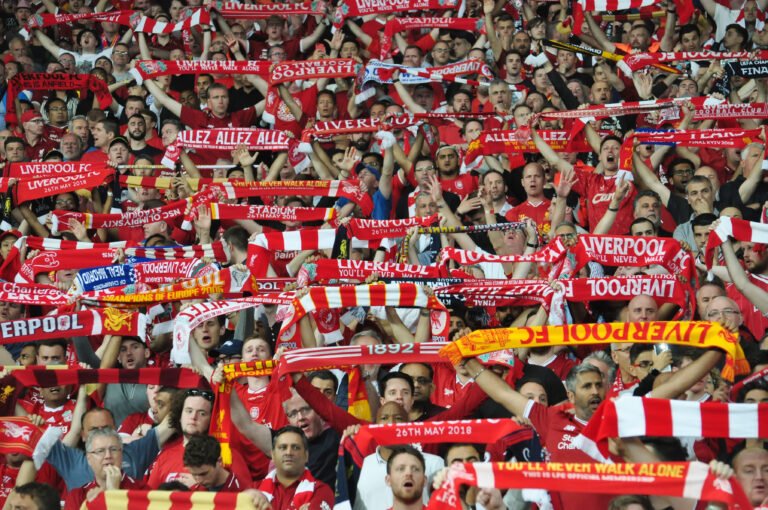
Fan Reception and Emotional Impact
From Elation to Frustration: Fan Reactions in the VAR Era
Fans play a vital role in soccer matches, injecting passion and emotion into every moment. However, the introduction of VAR has had mixed effects on fan reception and emotions during games.
While many supporters appreciate the increased accuracy in decision-making, there is also frustration when subjective calls continue to divide opinions even after video review. Controversial decisions made with or without VAR have always been part of soccer’s charm, igniting debates among fans.
With VAR’s intervention, some fans feel that these debates have intensified rather than subsided. The emotional rollercoaster experienced by fans during matches has become more intense as they witness their team’s joy turn into anguish or vice versa due to a meticulous examination of incidents on video screens.
International Competitions and VAR Usage
A Global Adoption with Varying Approaches
VAR has made its way into numerous international competitions but its implementation varies across different leagues and tournaments worldwide. Some competitions have fully embraced this technology, conducting comprehensive trials before integrating it seamlessly into their matches. Others remain skeptical about its impact on the flow of the game or are concerned about technical challenges associated with its use.
In certain leagues, referees use pitchside monitors as an integral part of their decision-making process while others rely solely on communication from the Video Assistant Referee center without consulting on-pitch reviews frequently. Each approach comes with its own set of advantages and disadvantages based on factors like match tempo, referee experience with technology usage, and the importance placed on maintaining the rhythm of play.
Conclusion
In the ever-evolving game of soccer, VAR has undoubtedly made its mark. While controversies, subjectivity, and inconsistencies persist, it is essential to remember that VAR’s primary goal is to achieve fairness and accuracy in decision-making.
The challenges faced along the way should be seen as opportunities for improvement rather than reasons to dismiss this technological advancement. The tactical implications for teams have forced them to strategize differently, promoting a fairer playing field where diving and simulation are reduced.
Fan reception may oscillate between elation and frustration, but passionate discussions foster a deeper connection with the sport. As international competitions continue exploring their approaches to VAR usage, a harmonized system that balances precision with maintaining the flow of play will eventually emerge.
VAR is not about eliminating controversy; rather, it aims to minimize errors and enhance the overall integrity of the game. Soccer’s timeless allure lies in its unpredictability and human drama.
VAR complements this by providing another layer of scrutiny while striving for fairness. So let us embrace these changes as they pave the way for a brighter future where soccer reaches new heights of accuracy without losing its essence—the beautiful game we all love. (1)
Box-to-Box Center Midfielder: The Engine of Modern Soccer Teams
Soccer is a game of skill, strategy, and teamwork. Every player has...
Read More